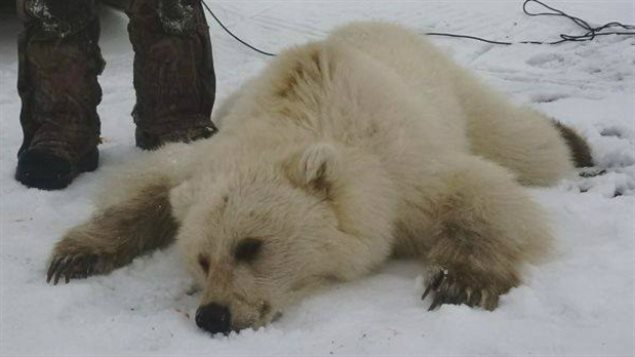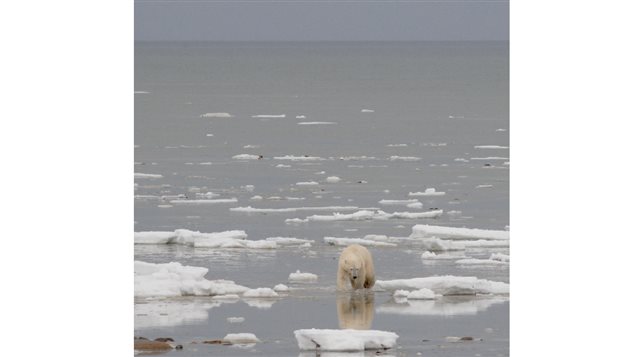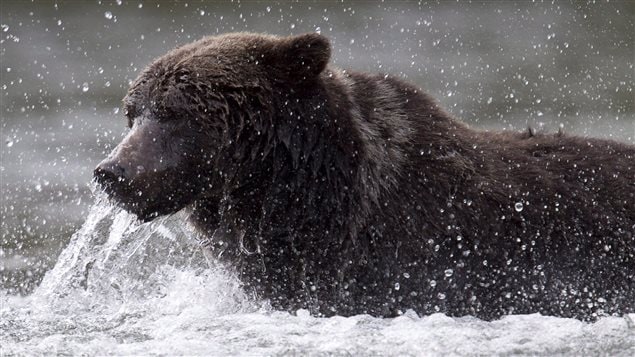A hunter in Canada’s northern territory of Nunavut recently shot what was once-rare cross between a grizzly and a polar bear, reports CBC reporter Mitch Wiles. Climate change is hitting the world’s circumpolar regions hard with temperatures rising faster there than in other parts of the world.
Love happens
Grizzly bears are normally found in sub-arctic regions of Canada but some are reported to be moving north as temperatures warm. If they reach arctic regions, they may meet polar bears and love can happen.
There have been at least three hybrid bears sighted by hunters since 2006, reports CBC. Polar and Grizzly bears are genetically similar and have been known to interbreed.

‘The shape of a grizzly head’
Aboriginal hunter Didji Ishalook told Wiles he saw an animal on top of a hill near his home in Arviat. At first he thought it was an Arctic fox or a small polar bear. When he got closer he saw it was a hybrid bear.
“It turned out to be a grizzly half-breed,” Ishalook said.
“It looks like a polar bear but…it’s got brown paws and big claws like a grizzly. And the shape of a grizzly head.” Although the bear was white it had brown paws.
Why shoot bears?
Inuit are allowed to hunt a limited number of polar bears for meat and fur. Only 24 permits are issued in western Hudson Bay, where this hybrid was shot.
Ishalook says he is going to send the hide to a taxidermist and use it as a rug or mount it on a wall.

Bears swim vast distances due to ice melt
Canada is home to 60 per cent of the world’s polar bears. There are 19 separate populations, some of which are doing well and others not. Some polar bears are suffering because the floating chunks of ice from which they hunt are melting. Some bears in the Beaufort sea have been seen swimming hundreds of kilometres over several days and becoming emaciated.

A grizzly would eat you
The grizzly bear is the second largest land carnivore in Canada and it ranges throughout the western part of the country. It can run at speeds of 55km per hour and is an omnivore. If it is hungry and has the opportunity it will eat you, although it usually prefers other mammals, salmon and berries.
Grolar or pizzly or nanurlak?
As for what you call a hybrid, unofficially a grizzly daddy sires a grolar and a polar daddy sires a pizzly. But the Inuit call it a nanurlak. That’s from the words nanuk for polar bear and aklak for grizzly bear.







For reasons beyond our control, and for an undetermined period of time, our comment section is now closed. However, our social networks remain open to your contributions.